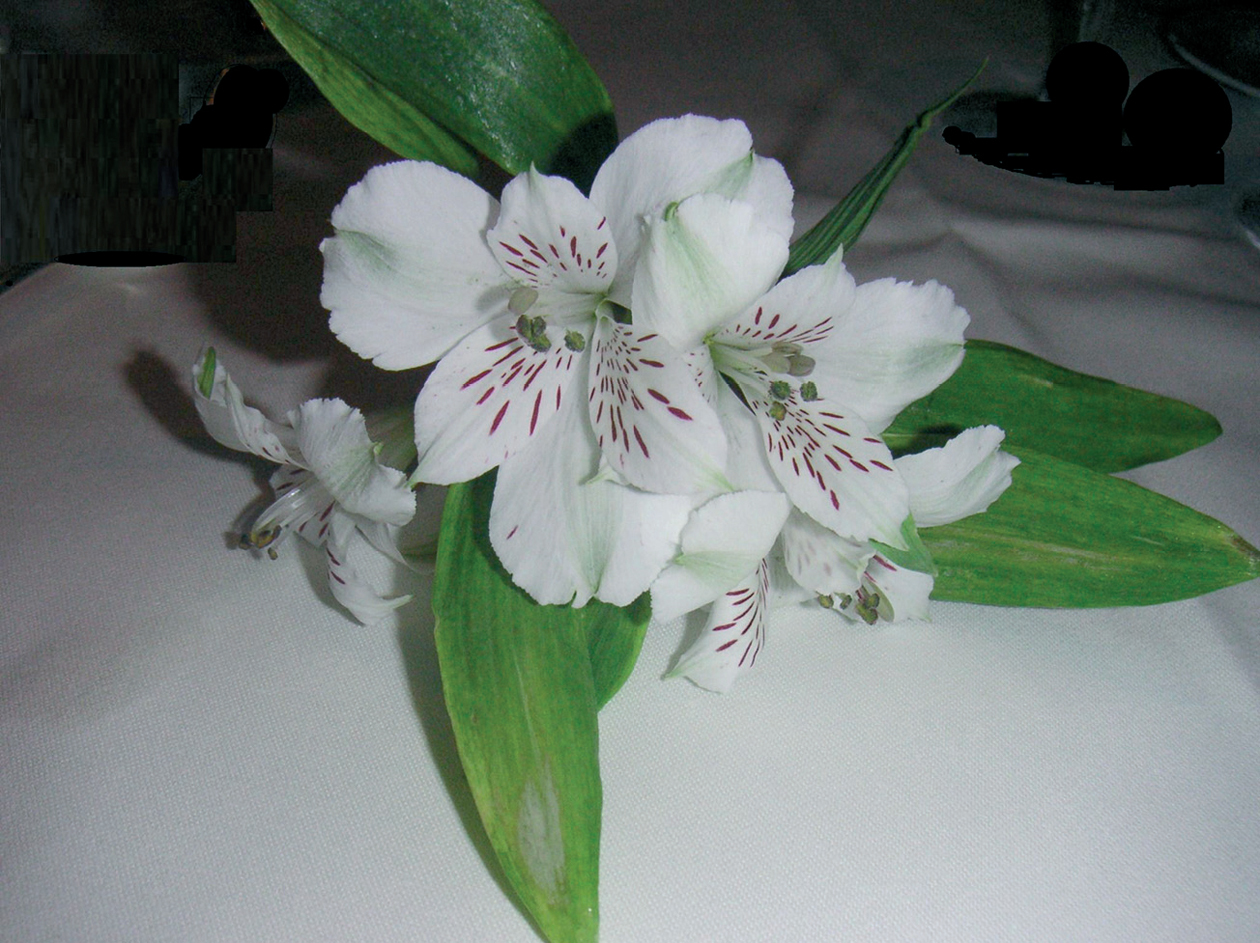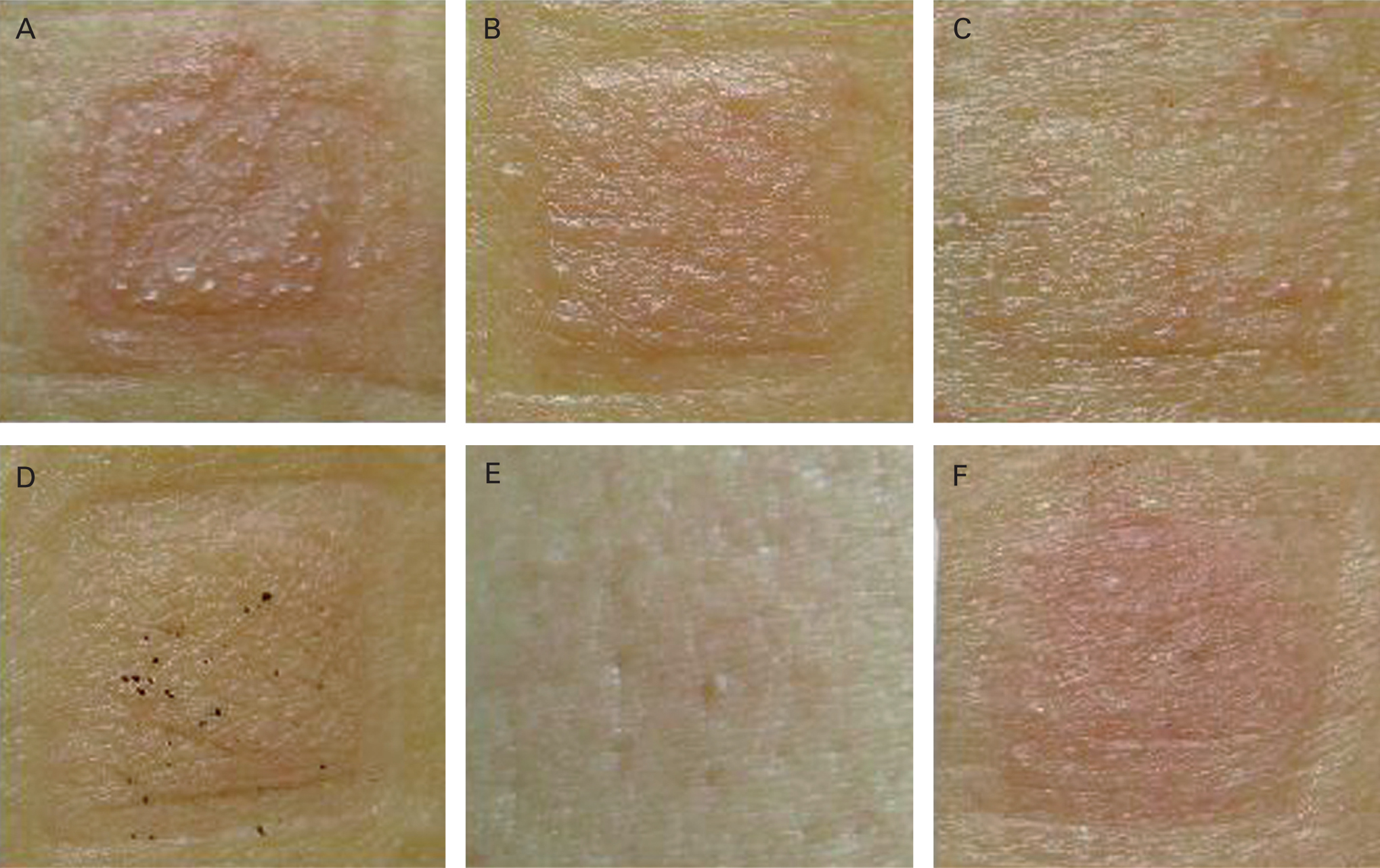INTRODUCTION
In the last decade, Alstroemeria cultivars (Peruvian lily or Inca lily) have been increasingly used as cut flowers due to their beauty and durability (fig. 1). The genus Alstroemeria is a member of the Alstroemeriaceae family, Alstroemeriales order and Liliopsida class 1. The plants were originally found mainly in the Andean foothills of Chile and to a lesser extent in Peru. Nowadays, they are extensively cultivated in Europe and North America 2. Alstroemeria is one of the three most common causes of occupational allergic contact dermatitis among florists 3 and is frequently found among people working in cut flower production 4. The causative allergen is tulipalin A (alpha-methylene-gamma-butyrolactone), which results from acidic hydrolysis of tuliposide A following damage to the plant 2,5. Tuliposide A is found in all parts of the plant 6.
Figure 1.--Alstroemeria spp. plant.
CASE REPORT
We report the case of a 65-year-old woman who, two years previously, had developed severe dermatitis with erythema, scaling, peeling and fissuring on the thumb, index and middle fingers of the dominant hand (right hand), and less severe dermatitis on her left palm and front of forearm. Occasionally, she experienced itching of the neck and face. The onset of symptoms coincided with retirement from her job as a kitchen assistant and the start of home gardening activities, including cutting flowers such as Alstroemeria for ornamental bouquets. The symptoms worsened during the flowering season (spring and summer). Wearing vinyl gloves did not prevent the occurrence of lesions.
METHODS
The patient and three healthy individuals were submitted to epicutaneous tests with the European standard series and the plant series (Chemotechnique) as well as stem portions of three suspected ornamental plants (Alstroemeria, Lilium and Zantedeschia), garlic, and onion.
RESULTS
Patch tests performed in our patient revealed an extreme reaction (+ + +) to Alstroemeria and alpha-methylene-gamma-butyrolactone, a strong reaction (+ +) to propolis and wood tar mix, a weak reaction (+) to balsam of Peru, an irritant reaction to garlic, and negative results to diallyl disulfide (fig. 2). Patch tests performed in the healthy individuals revealed negative.
Figure 2.--Positive results patch tests: A) Alstroemeria (+ + +); B) alpha-methylene-gamma-butyrolactone (+ + +); C) propolis (+ +); D) wood tar mix (+ +); E) balsam Peru (+); F) garlic (irritant).
DISCUSSION
Alstroemeria was named after Klas Alstroemer, who introduced this long-lasting flower into cultivation in Europe in 1754 2. In the last few years, it has been increasingly cultivated because of its durability and extended period of flowering, and several reports have demonstrated its ability to cause allergic contact dermatitis. Typically, dermatitis occurs in the first three digits of the dominant hand in florists ("tulip fingers"), extending to the palm in workers who cut the flowers 6-10. In our patient, it became obvious that exposure occurred when she cut flowers and gathered them in her left hand and forearm. The patch test to Alstroemeria stem and to alpha-methylene-gamma-butyrolactone confirmed the diagnosis. Although the patient tried to protect herself by wearing vinyl gloves, she could not prevent the occurrence of lesions. In fact, as Marks has stated 10, the allergen crosses vinyl (polyvinyl chloride) gloves. Nitrile (synthetic rubber) gloves, however, are protective. In some cases, dermatitis may occur on the face and neck, suggesting airborne contact dermatitis. Reportedly, small amounts of tulipalin A can be emitted from undamaged flowers 11, which could account for the itching on our patient's neck and face.
In addition to allergic contact dermatitis, this patient also displayed irritant and probably nonallergic symptoms to garlic, since the test to diallyl disulfide, the allergen responsible for allergic contact dermatitis to garlic, was negative 12. Sensitization to allergens of plant origin (propolis, wood tar mix and balsam of Peru), occasionally included in emollients, could be explained by the use of moisturizers to treat the lesions. Negative results of patch tests performed in healthy individuals invalidate the hypothesis of false positive reactions in the patient.
We stress the importance of Alstroemeria as a cause of allergic contact dermatitis, not only in workers involved in the flower trade but also in other people who might come in to contact with this plant in their leisure activities. Awareness of this condition among physicians and the public should reduce the risks of contact.
Correspondence:
Beatriz Tavares, MD
Serviço de Imunoalergologia
Hospitais da Universidade de Coimbra
Praceta Mota Pinto
3000-075 Coimbra. Portugal
E-mail: beatriztavares@net.sapo.pt








